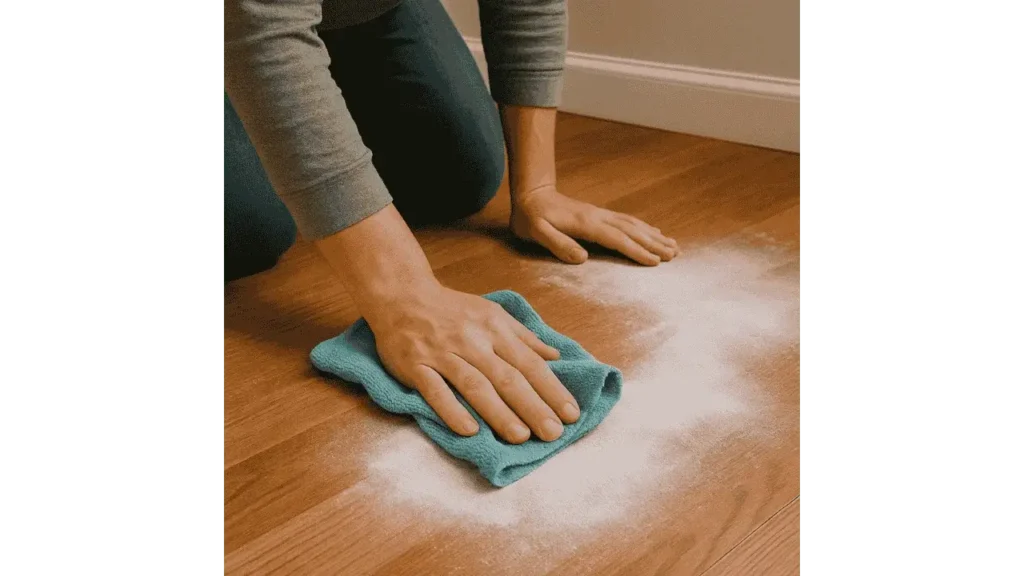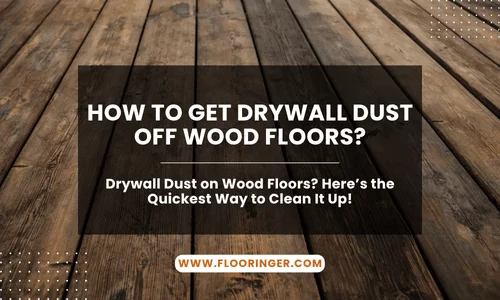Drywall dust can quickly coat your wood floors during renovations, and if not removed correctly, it can leave behind a dull residue or even cause scratches. This fine, powdery substance settles deep into crevices and grain lines, making ordinary cleaning methods less effective. Unlike dust from regular household activity, drywall particles are extremely fine and can embed into the floor’s surface. Fortunately, with a few strategic steps and the right tools, you can restore the shine and integrity of your hardwood without damaging its finish or long-term durability.

Why Is Removing Drywall Dust Important?
Drywall dust contains fine particles that can settle into wood grain, crevices, and floor finishes. Leaving it unattended can lead to a cloudy, dull appearance and even cause long-term damage to the floor’s protective coating. It can also contribute to indoor air quality issues if not dealt with properly. Proper removal is crucial to maintaining the aesthetic appeal and longevity of your wood floors.
According to Jennifer Morales, a certified flooring specialist at WoodCare Solutions,
“Drywall dust can be surprisingly abrasive. If it’s not removed properly, it can dull or even scratch your floor’s finish over time.”
Preparing for Cleanup
Before tackling the drywall dust, prepare the area to prevent it from spreading further. Close off vents, turn off fans, and ensure the room is well-ventilated to control airborne dust during the process. Removing furniture and covering nearby items can also help minimize dust resettling during cleaning. These precautions will make your cleanup more effective and limit repeat efforts.
Using a Dry Microfiber Mop
A dry microfiber mop is ideal for lifting drywall dust without scratching the floor’s surface. Glide the mop gently across the floor, allowing the fibers to capture the dust. Unlike regular brooms or cloths, microfiber traps particles rather than scattering them. Avoid applying pressure, which could embed particles into the wood grain and damage the floor’s finish.
Read More: How to Touch Up Wood Floors?
Vacuuming with a Soft Brush Attachment
Use a vacuum with a soft brush attachment to clean edges, corners, and hard-to-reach spots. Set the vacuum to low suction to avoid damaging the finish while ensuring that even the finest particles are removed. Pay extra attention to spaces between planks and baseboards where dust tends to collect. This step helps ensure no leftover grit remains to scratch the surface during further cleaning.
Deep Cleaning the Floors
Once you’ve removed loose dust, follow up with a deeper clean to eliminate residue and restore the floor’s natural appearance. This step is essential for lifting any particles that may have bonded lightly to the surface.
Damp Mopping with a Wood-Safe Cleaner
Dampen a microfiber mop with a wood-safe cleaner. Ensure the mop is only slightly damp, excess moisture can lead to warping. Clean in small sections and wipe dry immediately with a clean cloth to prevent moisture from lingering. Stick to cleaners specifically designed for hardwood to avoid leaving a film or residue.
Polishing and Buffing
After the floor has dried, apply a high-quality wood polish suited for your floor finish. Use a microfiber pad or soft cloth to buff the surface gently in circular motions, reviving the natural shine without leaving streaks. This final touch can make your floors look freshly finished and helps preserve the protective layer.
Learn More: How Long Does It Take to Sand Hardwood Floors?
Maintaining Wood Floors After Cleanup
To maintain a clean and polished look, incorporate preventive care. Place doormats at entry points to reduce dust tracking. Sweep or mop regularly using a microfiber tool. Avoid abrasive tools or harsh chemicals that may wear down the protective coating. Establishing a consistent cleaning routine will minimize buildup and preserve the floor’s finish.
“Frequent gentle cleaning is far more effective than occasional aggressive scrubbing,” says Paul Griffin, a wood floor maintenance expert with over two decades of experience.
Final Takeaways
Removing drywall dust from wood floors requires a methodical and gentle approach. Dry mopping, vacuuming, and carefully damp cleaning will help preserve your floor’s finish. Finish the job with a light polish, and stick to regular maintenance to keep your wood floors looking flawless for years. Acting quickly and using the correct tools makes all the difference between dull, damaged surfaces and long-lasting natural beauty.
